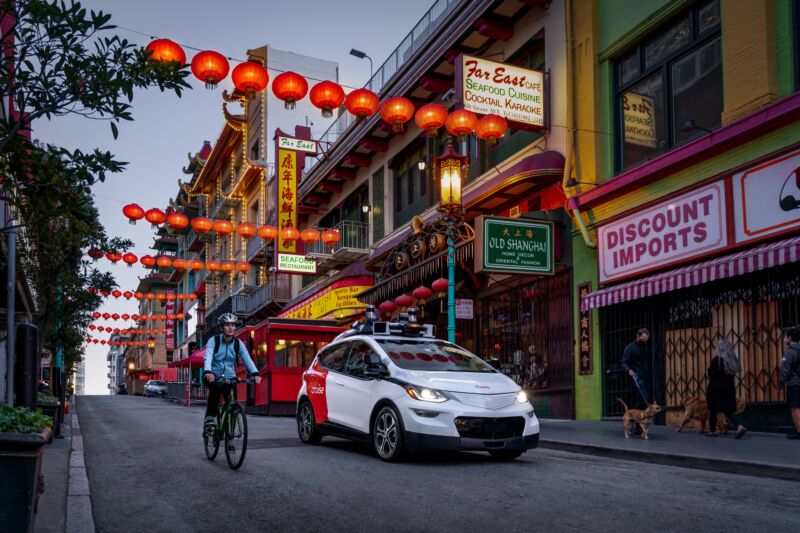
The robotaxi companies Waymo and Cruise now have permission to offer around-the-clock driverless rides to fee-paying passengers in San Fransisco. Until now, both autonomous ride-hailing companies have been able to offer restricted service in the city, but on Thursday afternoon the California Public Utilities Commission (CPUC) approved a pair of resolutions that remove those restrictions.
California established a pathway to approving robotaxi operations in late 2020 when the CPUC announced a deployment program. Both Waymo and Cruise had been using testing permits to drive around the city, but in 2021 both applied for permission to start operating a commercial service with no safety driver on board and that charged passengers for their rides.
In 2021, the California Department of Motor Vehicles gave both Waymo and Cruise deployment permits for autonomous vehicles, but any commercial services also required CPUC’s approval.
Until now, Waymo was only allowed to charge customers for rides in San Fransisco if there was a safety driver in the vehicle; non-paying rides could take place at any time with no safety driver. Cruise was operating under a slightly looser leash in a limited area—it was allowed to charge passengers for driverless rides between the hours of 10 pm and 6 am, but like Waymo, it was also allowed to operate throughout the city, charging rides, as long as a safety driver was in the car.
Now, both Cruise and Waymo have permission to operate throughout the city, day or night. CPUC approved the resolutions in a three-to-one vote after a six-and-a-half-hour hearing.
“While we do not yet have the data to judge [autonomous vehicles] against the standard human drivers are setting, I do believe in the potential of this technology to increase safety on the roadway,” said CPUC Commissioner John Reynolds. “Collaboration between key stakeholders in the industry and the first responder community will be vital in resolving issues as they arise in this innovative, emerging technology space.”
There were plenty of voices in opposition to approving the Waymo and Cruise plans. There were plenty of complaints about traffic congestion caused by confused autonomous vehicles, as well as concerns that Big Tech was up to no good and that autonomous vehicles would turn into tools of law enforcement, like giant Ring cameras on wheels.
San Francisco city agencies were also opposed to the permits, but the robotaxi companies received plenty of support, too, including from disability activists. CPUC was satisfied with both companies’ passenger safety plans.
“Offering a commercial, 24/7 driverless ridehail service across San Francisco is a historic industry milestone––putting Cruise in a position to compete with traditional ridehail and challenge an unsafe, inaccessible transportation status quo. We’re grateful to the CPUC for their leadership and will continue to work closely with our regulators, first responders, and other key stakeholders as we expand our service to more people,” said Prashanthi Raman, VP of global government affairs at Cruise.
“Today’s permit marks the true beginning of our commercial operations in San Francisco. We’re incredibly grateful for this vote of confidence from the CPUC, and to the communities and riders who have supported our service. We can’t wait for more San Franciscans to experience the mobility, safety, sustainability, and accessibility benefits of full autonomy for themselves—all at the touch of a button,” said Tekedra Mawakana, co-CEO of Waymo.
https://arstechnica.com/?p=1960379

